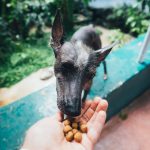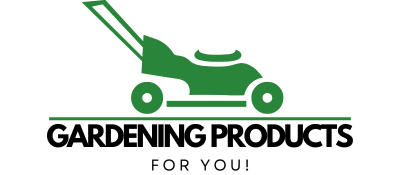Step-by-Step Guide to Growing Coriander At Home
On 2023-02-11 by Jaimy SellGrowing your own coriander is not only an enjoyable, rewarding experience, but also an incredibly easy task! With a few simple steps, you can have a thriving coriander plant in your home. Whether you’re a beginner to gardening or a seasoned green thumb, this step-by-step guide will show you the basics of growing and maintaining your own coriander plant. From seeds to soil, soil amendments, watering, and harvesting, this guide will provide all the information you need to grow and enjoy your own coriander. With a little bit of time and effort, you’ll be able to reap the rewards of your hard work and enjoy the fresh, flavorful coriander right in your own home. So, let’s get started and learn how to grow your own coriander!
What You Need to Get Started
– A place outdoors to grow your coriander plant – Indoor plans are available, but we recommend planting your coriander outdoors to ensure its success. – Seeds for your coriander plant – The seeds for your coriander plant will need to be stratified for at least 1 year before you can plant them outside. Before you purchase seeds, make sure you know exactly what you’re buying. Coriander seeds may be sold as Chinese cilantro, Cuban coriander, or Indian cilantro. Although all three are technically named cilantro, only Indian cilantro is true coriander. If you don’t know what you’re buying, you may end up with the wrong plant. – A container or pot to grow your coriander plant in – A container or pot will help to contain the soil and keep it moist, but it doesn’t need to be especially large. A 2-liter soda bottle will work well for growing coriander and other herbs. – A sunny outdoor planter – Coriander seeds prefer warm temperatures, so planting your coriander outside in a sunny area is ideal. – A sunny outdoor location – Your outdoor location should be well-drained, sunny, and protected from strong winds.
Selecting the Right Soil
Your outdoor coriander pot should be a porous mix that allows water to drain quickly. Look for a potting soil or soil mix that is high in organic matter and has a high cation exchange capacity (CEC) – the ability to hold onto nutrients. If possible, select an area of outdoor soil that has been recently amended with compost or manure. This will help to develop a beneficial microbe population in the soil that is beneficial to your coriander plant. There are many different potting soils available, and while they may be cheaper, they may also be less beneficial to your coriander plant. A good rule of thumb is to select a potting soil with a cation exchange capacity of at least 1.4. That way, it will have plenty of nutrients for your coriander plant.
Planting the Coriander Seeds
Sow your coriander seeds indoors 1 month before the last spring frost. This will help to stratify your seeds and make them ready for planting outdoors when the time arrives. In our experience, seeds will germinate faster if you sow them on the surface of moist soil. But, we’ve also had success with placing seeds on a paper towel and covering them with soil once they begin to sprout. You can sow the seeds in any soil-less container, such as a seed starting tray. When your seeds sprout, move the potting soil to the outside container, and replace it every 3 to 5 days until the seedlings are large enough to plant out into their outdoor potting soil. Begin potting your coriander seeds out into their outdoor potting soil when the temperature hits 60°F. This will help the seedlings establish quickly, but it’s important that the soil doesn’t get too warm or it could damage the seeds.
Caring for the Coriander Plant
Keep your coriander plant outdoors in a sunny, well-drained location. It also helps if your outdoor area is kept between 55°F and 75°F. Inside temperatures should be kept between 65°F and 85°F. Indoors, your coriander may be kept indoors, though it’s best to give it plenty of sunlight. Keep the soil in your outdoor coriander pot slightly moist, but not soggy. Water your plant regularly, but avoid overwatering. Overwatering is the most common coriander plant problem, and it can be solved by taking these few steps. – For newly planted coriander, water thoroughly once every day for the first week. – After 3 weeks, reduce the amount of daily watering to once every other day. – After another 2 weeks, stop watering altogether. Growing coriander
Watering the Coriander Plant
Watering your coriander is crucial to successful growing. It’s important to remember that your coriander plant prefers well-drained, slightly moist soil, but not wet. You can follow a watering schedule as follows to ensure that your plant is properly watered: – Water your coriander plant daily for the first week. – Once every other day for the next 2 weeks. – Once every 3 to 5 days after that. To water your coriander, use a soaker hose with a 1/2 inch hose Barb or a soaker hose with a 1/2 inch threaded nozzle. Avoid overhead watering. This type of watering can be harmful to your plant because it may not allow the water to seep into the soil. Instead, water your plant’s potting soil by thoroughly watering the soil and then letting the water run through the potting soil until it’s soaked through. Make sure your hose is directly connected to your faucet and that it’s not leaking. If your hose is leaking, you should replace it.
Fertilizing the Coriander Plant
There are many different fertilizers that can be effective for growing a coriander plant. A good rule of thumb is to use a fertilizer with a ratio of 10-13-13. This refers to the amounts of nitrogen, phosphorus, and potassium. There are many different fertilizers that can be used for coriander. A good rule of thumb is to choose a fertilizer that is able to be used for food crops, such as ammonium nitrate fertilizer. Other good fertilizers include: tomato fertilizer, iron chelate, fish emulsion, and bat guano.
Pruning and Pinching the Coriander Plant
If you want to keep your coriander plant small, you can cut the shoots back to 3 nodes. If you want to maintain a larger plant size, you can pinch back the tips of the shoots to encourage new growth. If your coriander plant is getting too large, pinch the tips of the shoots to encourage new growth. This can be done every few weeks until your coriander plant is back to the desired size. When pruning your coriander plant, make sure to do so after the plant has been watered well. Pruning will encourage new growth, but it will also allow your plant to focus on photosynthesis, which is the process where the plant captures light and uses it to create energy.
Harvesting the Coriander Plant
Harvest your coriander at about 6 inches tall. Once your coriander plant has reached this height, it will continue to grow at a steady rate. You can harvest your coriander by simply pulling it out of the ground or by using a pair of garden shears to cut it down. When harvesting your coriander, it’s important to clean your harvesting tool thoroughly between each harvest. This will help to keep your tool free of germs and bacterial growth, which could affect the quality of your coriander.
This article is provided by
You may also like
- Ooni Pizza Oven and Patio Heater: The Ultimate Outdoor Cooking and Comfort Combo

- Outdoor Heating and Indoor Plants: Enhancing Comfort and Style in Your Home

- Creating a Pet-Friendly Home with Stylish Decor: Tips from the Pet Shop

- Exploring Ardcarne Garden Centre and Boyle Garden Centre: A Garden Lover’s Guide in Roscommon

- Creating the Perfect Home Sanctuary: Outdoor Heating and Indoor Plants

- Enhancing Your Outdoor Space: Garden Furniture and Pet Shop Essentials

- Enhance Your Outdoor Cooking Experience: Weber BBQ and Pizza Oven

- Bark United Kingdom: Your Go-To Platform for Pet Services
- The Sizzle of Success: Weber BBQs in Ireland
- Title: Enhance Your Garden Oasis: Must-Have Products for Every Gardener
